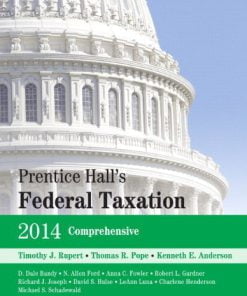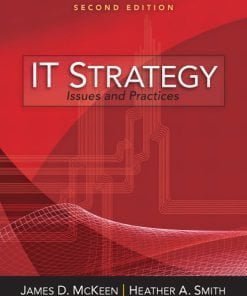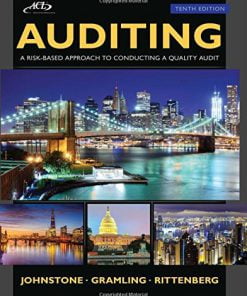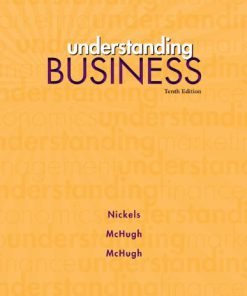Advanced Accounting 6th Edition Jeter Solutions Manual
$35.00 Original price was: $35.00.$26.50Current price is: $26.50.
Advanced Accounting 6th Edition Jeter Solutions Manual
This is completed downloadable of Advanced Accounting 6th Edition Jeter Solutions Manual
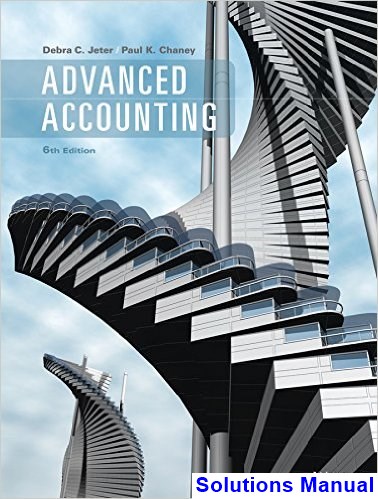
Product Details:
- ISBN-10 : 111874294X
- ISBN-13 : 978-1118742945
- Author: Debra C. Jeter (Author), Paul K. Chaney (Author)
Designed for the advanced accounting course, Advanced Accounting, 6th Edition Binder Ready Version by Debra Jeter and Paul Chaney delivers a balanced and detailed approach to the conceptual and technical aspects of financial accounting and reporting. Advanced Accounting includes comprehensive coverage of all three methods of consolidated financial reporting (cost, partial equity, complete equity). In the 6th edition, U.S. Standards and international principles are compared and contrasted, drawing the readers attention to the remaining differences. This is an unbound binder-ready version.
Table of Content:
Chapter 1
Merger
Merger refers to an agreement under which two or more companies combine to form a single company. It is a legal agreement where companies of same industry or different industry combine for the purpose to acquire more market share or to sale different kind of products. There are basically five types of mergers that company can adopt.
There are five types of mergers:
1. Horizontal Merger: A merger of the companies in the same industry is known as horizontal merger. It is a consolidation of business with the companies working in the same product line and in the same market operating as competitors.
2. Vertical Merger: It is a merger of companies supplying different type of goods for a particular product.
3. Market Extension Merger: It is a merger where companies produces the similar products but operate in different market. This merger helps the company to acquire larger share in the market.
4. Product Extension Merger: It is a merger between the companies which operate in same market and sale different but related products. It increase the market share of company and also, they would be able to reach more number of share.
5. Conglomerate Merger: It is the merger between the companies which are not related to each other and deal with completely different products.
1.
The factors that should be considered in analyzing the impact of the given merger on the income statement are:
• Synergy: In merger, the combined value of two companies are always more than the individual value of company is called synergy. When the merger increase the efficiency and its economic of scale, it is said that synergy of companies inclined effectively to benefit the company at large.
• Cost savings: Merger helps in using the each other companies’ resources which ultimately save cost for the company. Merged company used experienced employees of other company; assets are used to conduct business in more efficient manner; etc. It also get expert personnel of other company in much lower cost.
• Increased in revenue: Merger increases the capacity of production which resultant in increase in revenue for company.
• Global market: More production leads the company to expand in markets of merged companies. This increases its reach to global market which flourish its business in international market.
• Access to new market: Merger of companies open new avenues of investment for company. It provides positive environment within the company which is helpful in developing new ideas to access new market to acquire and attract more consumer towards its product.
2.
To consummate the acquisition, the company should have enough cash balance with them. The company must have weighed its other use at the time of using it as medium of exchange. Earnings per share is used to pay off existing shareholder so that merger would accurately justified its increased value.
It would be the right decision to merge when the rate of interest on debt taken is lower as the company will pay lower interest cost. Here, the merger increases the interest cost to $500 million which will get decrease over time.
3.
In addition to the factor mentioned above, the factor which cannot be quantified while entering acquisition decisions is culture difference between the companies into merger deal. In one company, management takes all its decisions while in the other company management includes lower staff while making crucial decisions. In merger, this could be difference between the working cultures of the companies. The other factor could be behavior and attitude of the top personnel of the companies. In merged company, only one person can hold top position in the company. Others management personnel should work together to take company ahead in the market. Therefore, this factor must also keep in mind while taking acquisition decisions.
4.
This acquisition is complicated by the lack of consistency between the two companies’ methods of accounting and currency. The impact of above issues on the merged company in the following years of acquisitions are as follows:
1. One company might be using accrual system of accounting while other is using cash system of accounting. At the time of merger, companies should properly discuss about the method of accounting system to be followed in the merged entity so that possibility of conflict would be negligible.
2. The companies must be clear about the way fixed assets will be depreciate in the merged entity. The management will decide whether written down value method or straight-line method or any other method of depreciation follow by the company.
3. The company must decide the uniform currency, whether dollars or pound or euros, to be used to calculate gain or loss of the merger entity. Selecting a currency will impact the earnings and gain or loss of companies. Hence, it should be decided wisely so that it impact positively in the calculation of its earnings.
People Also Search:
advanced accounting
advanced accounting jeter
advanced accounting 6th edition jeter
advanced accounting 6th edition
advanced accounting 6th edition download scribd
advanced accounting 6th edition solution manual download pdf
Related products
Solution Manual
Solution Manual
Prentice Hall’s Federal Taxation 2014 Comprehensive Rupert 27th Edition Solutions Manual
Solution Manual
Management Information Systems Managing the Digital Firm Laudon 14th Edition Solutions Manual
Solution Manual
Solution manual for Accounting: Tools for Business Decision Making Kimmel Weygandt Kieso 5th Edition
Solution Manual
Auditing A Risk Based-Approach to Conducting a Quality Audit Johnstone 10th Edition Solutions Manual
Solution Manual
Understanding Business Nickels 10th Edition Solutions Manual





